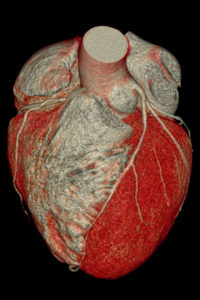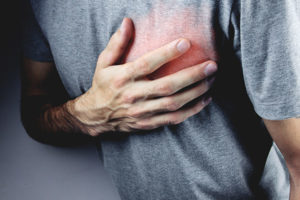
Know the signs of vascular disease
You don’t need a medical degree to know that you have blood vessels, and that these blood vessels transport blood throughout your body. After picking up some oxygen from the lungs, your blood travels through these vessels to deliver oxygen to all the parts of your body – all your organs and muscles, your heart and your brain.
So, it follows logically that your blood vessels are very important to your health and survival. That’s why you should understand what puts your blood vessels at risk of damage and the serious impacts that can have on your health.
What is vascular disease?
A vascular disease is a condition that impacts your arteries and veins, harming your blood flow, which in turn harms other parts of your body. There are several different kinds of vascular disease.
Vascular disease can also be caused by blood clots that block blood flow, inflammation that narrows blood vessels or genetics. However, the most common cause of vascular disease is atherosclerosis, which happens when a buildup of a fatty substance called plaque inside the arteries causes them to narrow, slowing or blocking the flow of blood. The causes of atherosclerosis aren’t clearly understood, but experts do know several things that increase your risk.
Risk factors for atherosclerosis, include:
- High cholesterol and triglyceride levels
- High blood pressure
- Smoking
- Diabetes
- Obesity
- Physical inactivity
- High saturated fat diet
Several serious vascular diseases may show no symptoms before a stroke or heart attack hits, so reducing your risk factors is the most important thing you can do to try to avoid them. Talk with your doctor about healthy lifestyle choices that promote a healthy vascular system.
Since knowledge is power, below are vascular diseases to be aware of and what symptoms you should be on the lookout for.
Coronary artery disease
Caused by atherosclerosis in the arteries that supply blood to the heart, this is the number one killer of adults in the U.S. It can cause heart attack.
You may have no symptoms prior to suffering a heart attack, but some people experience:

- Angina (chest pain)
- Heaviness, tightness, pressure, burning, or pain in the chest behind the breastbone
- Pain spreading to the arms, shoulders, jaw, neck, or back
- Shortness of breath
- Weakness and severe tiredness (fatigue) especially during periods of activity
- Nausea
- Sweating
Cerebrovascular disease
This can cause stroke or transient ischemic attack (TIA), which is a short-term loss of blood flow to an area of the brain. It usually last less than 5 minutes but not longer than 24 hours, with complete recovery.
There are generally no symptoms until you suffer a stroke.
Peripheral vascular disease
This occurs when blood flow to your limbs is restricted, increasing your risk of heart attack or stroke due to blood clots. A lot of people with this disease have no symptoms, but those who do tend to suffer from pain in the thigh, calf or buttocks while walking or exercising.
Other symptoms may include:
- Pale or bluish skin
- Lack of leg hair or toenail growth
- Sores on toes, feet, or legs that heal slowly or not at all
- Decreased skin temperature, or thin, brittle, shiny skin on the legs and feet
- Weak pulses in the legs and the feet
- Gangrene
- Impotence
- Wounds that won’t heal over pressure points, such as heels or ankles
- Numbness, weakness, or heaviness in muscles
- Burning or aching pain at rest, commonly in the toes and at night while lying flat
- Restricted mobility
- Thickened, opaque toenails
- Varicose veins
Thoracic aortic aneurysm
 An aneurysm is a bulging, weakened area in the wall of a blood vessel – in this case it occurs in the aorta where it goes through the chest.
An aneurysm is a bulging, weakened area in the wall of a blood vessel – in this case it occurs in the aorta where it goes through the chest.
The aorta is your largest blood vessel. It delivers oxygenated blood from the heart to the rest of the body.
Thoracic aortic aneurysms may not cause symptoms. Sudden, severe pain associated with a thoracic aneurysm may be a sign of a life-threatening medical emergency.
Symptoms may include:
- Pain in the jaw, neck, or upper back
- Pain in the chest or back
- Wheezing, coughing, or shortness of breath
- Hoarseness as a result of pressure on the vocal cords
- Trouble swallowing
Abdominal aortic aneurysm
More likely than a thoracic aortic aneurysm, this type of aneurysm strikes the aorta where it travels through the abdomen.
About 75% of these types of aneurysms don’t cause symptoms., so it’s called the “silent killer,” which serves as another reminder of the importance of limiting your risk factors for atherosclerosis, a leading cause of this condition.
Pain in either the abdomen, chest, lower back or groin area is the most common symptom. Sudden, severe pain in the back or abdomen may mean the aneurysm is about to rupture. This is a life-threatening medical emergency.
Abdominal aortic aneurysms can also cause a pulsing sensation that feels like a heartbeat in the abdomen.
Lymphatic vascular diseases
This is swelling in your armpits, called lymphedema, caused by problems of the normal draining of the lymph nodes.
Renal (kidney) vascular diseases
There are a variety of vascular diseases the impact your kidney and can lead to kidney failure.
Genitourinary vascular diseases
Issues with blood flow can cause erectile dysfunction (impotence).
If you experience the symptoms of any of these conditions, talk to your doctor as soon as possible. You may not have a vascular disease, but it is not worth risking your safety to avoid a doctor visit.